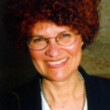Year of Wonders: A Novel of the Plague
(Libby/OverDrive eBook, Kindle)
Available Platforms
Description
More Details
Excerpt
Similar Titles From NoveList
Similar Authors From NoveList
Published Reviews
Publisher's Weekly Review
Discriminating readers who view the term historical novel with disdain will find that this debut by praised journalist Brooks (Foreign Correspondence) is to conventional work in the genre as a diamond is to a rhinestone. With an intensely observant eye, a rigorous regard for period detail, and assured, elegant prose, Brooks re-creates a year in the life of a remote British village decimated by the bubonic plague. Inspired by the actual town commemorated as Plague Village because of the events that transpired there in 1665-1666, Brooks tells her harrowing story from the perspective of 18-year-old Anna Frith, a widow with two young sons. Anna works as a maid for vicar Michael Mompellion and his gentle, selfless wife, Elinor, who has taught her to read. When bubonic plague arrives in the community, the vicar announces it as a scourge sent by God; obeying his command, the villagers voluntarily seal themselves off from the rest of the world. The vicar behaves nobly as he succors his dwindling flock, and his wife, aided by Anna, uses herbs to alleviate their pain. As deaths mount, however, grief and superstition evoke mob violence against "witches," and cults of self-flagellation and devil worship. With the facility of a prose artist, Brooks unflinchingly describes barbaric 17th-century customs and depicts the fabric of life in a poor rural area. If Anna's existential questions about the role of religion and ethical behavior in a world governed by nature seem a bit too sophisticated for her time, Brooks keeps readers glued through starkly dramatic episodes and a haunting story of flawed, despairing human beings. This poignant and powerful account carries the pulsing beat of a sensitive imagination and the challenge of moral complexity. (Aug. 6) Forecast: Brooks should be a natural on talk shows as she tells of discovering the town of Eyam, in Derbyshire, in 1990, and her research to unearth its remarkable history. With astute marketing, Viking will have a winner here. BOMC, Literary Guild and QPB featured alternates; 8-city author tour; rights sold in England, France, Germany, Israel, the Netherlands, Norway, Spain and Sweden. (c) Copyright PWxyz, LLC. All rights reserved
School Library Journal Review
Adult/High School-Brooks's title is based on the actual lead-mining village of Eyam, Derbyshire, whose inhabitants voluntarily quarantined themselves for a year when stricken with Bubonic Plague in 1665-1666. Anna Frith is widowed at 18 by a mining accident and is the mother of two young boys. Through her recollections, readers live through the year as her endurance and abilities are sorely tested. Anna works for the new young minister's wife, who teaches her to read and becomes more of a companion than a mistress. At her employers' suggestion, Anna takes in a boarder to help meet expenses. The man is a tailor and when a shipment of fabrics, apparently flea infested, is delivered from London-the plague is suddenly upon them. The minister convinces his flock to make the supreme sacrifice and arranges for food and supplies to be delivered to the outskirts of the hamlet. The story is a portrait of the best and worst in people faced with sorrow, terror, and death. Some succumb to madness, others display cowardice and hysteria, and a few look for solutions in murder or self-mutilation. Through it all, however, Anna grows in strength, abilities, and understanding as she faces the loss of her children, her friends, and her innocence, and takes on the tasks of an ever-dwindling populace. This is an excellently portrayed study of the wonder of human courage.-Carol DeAngelo, Kings Park Library, Burke, VA (c) Copyright 2010. Library Journals LLC, a wholly owned subsidiary of Media Source, Inc. No redistribution permitted.
Library Journal Review
Usually, "Black Death" brings to mind thoughts of a 14th-century Europe ravaged and emptied by pestilence. But there were plague outbreaks throughout the early modern period, notably in England in 1665-66. Particularly hard hit during that particular epidemic was the Derbyshire village of Eyam, whose story is told here. The plague traveled to Eyam in a bundle of cloth. The unfortunate recipient, a tailor, then becomes the first to die in an epidemic that leaves the village shrunk to one-third of its former population. What makes the tale of Eyam remarkable is that the citizens, led by their pastor, agreed to impose a quarantine on themselves in order to stop the plague from spreading. The usual response to news of plague in early modern Europe was flight, for there was no cure and death was almost certain. Brooks (Foreign Correspondence) tells the story of Eyam's heroic battle from the perspective of young Anna Frith, servant to the pastor and his wife. Widowed before the epidemic, Anna is the mother of two small children and landlady to the unfortunate tailor. She nurses her friends and family to little avail during the horrors of the plague year, but her spirit remains unbroken. Like Eyam itself, Anna prevails and lives to see another day. Fans of Judith Merkle Riley's historical novels (e.g., Master of All Desires, LJ 11/15/99) will find much to savor in the new work. Recommended for all fiction collections. [Previewed in Prepub Alert, LJ 4/15/01.] Wendy Bethel, Grove City P.L., OH (c) Copyright 2010. Library Journals LLC, a wholly owned subsidiary of Media Source, Inc. No redistribution permitted.
Kirkus Book Review
Painstaking re-creation of 17th-century England, swallowed by over-the-top melodramatics: a wildly uneven first novel by an Australian-born journalist. The Year of the title is 1665: the date of the devastating bubonic epidemic chronicled in Daniel Defoe's A Journal of the Plague Year. Brooks's tale, framed by reveries set a year and a half after the plague burns itself out (in "Leaf-Fall, 1666"), is narrated by Anna Frith, an earnest and highly intelligent young widow who buries her own multiple bereavements (first her gentle husband, later their two small sons) in work, aiding her (unnamed) village rector's wife in treating the sick with medicinal herbs and traditional cures. Brooks is at her best in lyrical, precise descriptions of country landscapes and village customs, and makes something very appealing and (initially) quite credible out of Anna's wary hunger for learning and innate charitable kindness. But the novel goes awry when the panic of contagion isolates her village from neighboring hamlets, a forthright young woman and her distracted aunt are accused of witchcraft and hunted down, and Anna's drunken, violent father, who profits as a gravedigger for hire, resorts to providing corpses that will require his services. The excesses continue, as Anna's stepmother, crazed with grief, seeks vengeance against rector Michael Mompellion and his saintly wife (and Anna's mentor and soulmate) Elinor, and rise to a feverish pitch when Anna, having found a new innocent victim to nurture and raise, offends the powerful Bradford family and must flee to safety-ending up (in a borderline-risible Epilogue) in North Africa in the sanctuary of a kindly "Bey's" harem. It's all more than a bit much: Thomas Hardy crossed with Erskine Caldwell, with more than a whiff of Jane Eyre in Anna's conflicted devotion to the brooding, Mr. Rochester-like Mompellion. In between the more hysterical moments, Brooks writes quite beautifully. But Year of Wonders was a mistake. Author tour
Library Journal Reviews
Having mastered nonfiction in two previous outings (e.g., Nine Parts of Desire), former war correspondent Brooks takes on fiction. In 1666, a remote English village infected with the plague is persuaded by a fiery young preacher to seal itself off in a brutal quarantine. Copyright 2001 Cahners Business Information.
Library Journal Reviews
Usually, "Black Death" brings to mind thoughts of a 14th-century Europe ravaged and emptied by pestilence. But there were plague outbreaks throughout the early modern period, notably in England in 1665-66. Particularly hard hit during that particular epidemic was the Derbyshire village of Eyam, whose story is told here. The plague traveled to Eyam in a bundle of cloth. The unfortunate recipient, a tailor, then becomes the first to die in an epidemic that leaves the village shrunk to one-third of its former population. What makes the tale of Eyam remarkable is that the citizens, led by their pastor, agreed to impose a quarantine on themselves in order to stop the plague from spreading. The usual response to news of plague in early modern Europe was flight, for there was no cure and death was almost certain. Brooks (Foreign Correspondence) tells the story of Eyam's heroic battle from the perspective of young Anna Frith, servant to the pastor and his wife. Widowed before the epidemic, Anna is the mother of two small children and landlady to the unfortunate tailor. She nurses her friends and family to little avail during the horrors of the plague year, but her spirit remains unbroken. Like Eyam itself, Anna prevails and lives to see another day. Fans of Judith Merkle Riley's historical novels (e.g., Master of All Desires, LJ 11/15/99) will find much to savor in the new work. Recommended for all fiction collections. [Previewed in Prepub Alert, LJ 4/15/01.] Wendy Bethel, Grove City P.L., OH Copyright 2001 Cahners Business Information.
Publishers Weekly Reviews
Discriminating readers who view the term historical novel with disdain will find that this debut by praised journalist Brooks (Foreign Correspondence) is to conventional work in the genre as a diamond is to a rhinestone. With an intensely observant eye, a rigorous regard for period detail, and assured, elegant prose, Brooks re-creates a year in the life of a remote British village decimated by the bubonic plague. Inspired by the actual town commemorated as Plague Village because of the events that transpired there in 1665-1666, Brooks tells her harrowing story from the perspective of 18-year-old Anna Frith, a widow with two young sons. Anna works as a maid for vicar Michael Mompellion and his gentle, selfless wife, Elinor, who has taught her to read. When bubonic plague arrives in the community, the vicar announces it as a scourge sent by God; obeying his command, the villagers voluntarily seal themselves off from the rest of the world. The vicar behaves nobly as he succors his dwindling flock, and his wife, aided by Anna, uses herbs to alleviate their pain. As deaths mount, however, grief and superstition evoke mob violence against "witches," and cults of self-flagellation and devil worship. With the facility of a prose artist, Brooks unflinchingly describes barbaric 17th-century customs and depicts the fabric of life in a poor rural area. If Anna's existential questions about the role of religion and ethical behavior in a world governed by nature seem a bit too sophisticated for her time, Brooks keeps readers glued through starkly dramatic episodes and a haunting story of flawed, despairing human beings. This poignant and powerful account carries the pulsing beat of a sensitive imagination and the challenge of moral complexity. (Aug. 6) Forecast: Brooks should be a natural on talk shows as she tells of discovering the town of Eyam, in Derbyshire, in 1990, and her research to unearth its remarkable history. With astute marketing, Viking will have a winner here. BOMC, Literary Guild and QPB featured alternates; 8-city author tour; rights sold in England, France, Germany, Israel, the Netherlands, Norway, Spain and Sweden. Copyright 2001 Cahners Business Information.
School Library Journal Reviews
Adult/High School-Brooks's title is based on the actual lead-mining village of Eyam, Derbyshire, whose inhabitants voluntarily quarantined themselves for a year when stricken with Bubonic Plague in 1665-1666. Anna Frith is widowed at 18 by a mining accident and is the mother of two young boys. Through her recollections, readers live through the year as her endurance and abilities are sorely tested. Anna works for the new young minister's wife, who teaches her to read and becomes more of a companion than a mistress. At her employers' suggestion, Anna takes in a boarder to help meet expenses. The man is a tailor and when a shipment of fabrics, apparently flea infested, is delivered from London-the plague is suddenly upon them. The minister convinces his flock to make the supreme sacrifice and arranges for food and supplies to be delivered to the outskirts of the hamlet. The story is a portrait of the best and worst in people faced with sorrow, terror, and death. Some succumb to madness, others display cowardice and hysteria, and a few look for solutions in murder or self-mutilation. Through it all, however, Anna grows in strength, abilities, and understanding as she faces the loss of her children, her friends, and her innocence, and takes on the tasks of an ever-dwindling populace. This is an excellently portrayed study of the wonder of human courage.-Carol DeAngelo, Kings Park Library, Burke, VA Copyright 2001 Cahners Business Information.
Reviews from GoodReads
Citations
Brooks, G. (2002). Year of Wonders: A Novel of the Plague . Penguin Publishing Group.
Chicago / Turabian - Author Date Citation, 17th Edition (style guide)Brooks, Geraldine. 2002. Year of Wonders: A Novel of the Plague. Penguin Publishing Group.
Chicago / Turabian - Humanities (Notes and Bibliography) Citation, 17th Edition (style guide)Brooks, Geraldine. Year of Wonders: A Novel of the Plague Penguin Publishing Group, 2002.
Harvard Citation (style guide)Brooks, G. (2002). Year of wonders: a novel of the plague. Penguin Publishing Group.
MLA Citation, 9th Edition (style guide)Brooks, Geraldine. Year of Wonders: A Novel of the Plague Penguin Publishing Group, 2002.
Copy Details
| Collection | Owned | Available | Number of Holds |
|---|---|---|---|
| Libby | 2 | 0 | 8 |





































